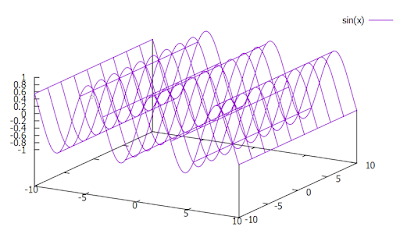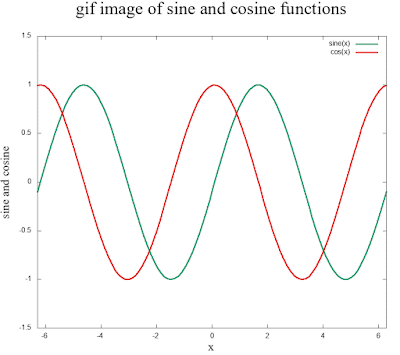concept on derivatives | what is the derivatives ? | rules of derivatives | mathematics (+2 level)
One of the difficult but interesting and very useful topics in mathematics is derivatives.
Derivatives give you an insight into the change of a function with respect to its variables.
For example, change of position of a car with respect to time.
The market value of any products with respect to the quantity of production and production cost.
The demand for daily used goods with respect to the number of people in the locality.
All these aspects represent a kind of derivatives.
For derivative, one needs to calculate the limit of the ratio of the increment of a function (`\Deltaf`) to the corresponding increment of the independent variable (`\Deltax`) of the function when `Deltax` tends to zero.
Mathematically,
`\lim_(\Deltax->0) \frac{\Deltaf}{\Deltax} = \frac{df(x)}{dx} ......(1)`
The method of calculating the limit is an operation that is called as differentiation of the function with respect to its variables.
We denote y = f(x), so
`\frac{df(x)}{dx} = \frac{dy}{dx}`
The result obtained from this operation is also called the differential coefficient of the function.
The differential coefficient for f(x) in the interval (a, b) is also expressed as,
`\lim_(\Deltax->0) \frac{f(x + \Deltax) - f(x)}{\Deltax}`
This is called first principle(limit theorem) of derivatives.
Some of the symbols used to denote derivative of y = f(x) with respect to x are
`f\prime(x), y\prime, \frac{df(x)}{dx}, \frac{dy}{dx}`
When you go on differentiating a function, power or degree or index (for example, 3 in `x^3`) of variables involved in the function goes on decreasing.
For example:-
Let's calculate derivatives of x, `x^2` and `x^3`.
1. y = f(x) = x
Let `\Deltax` be a small increment in x and `\Deltay` be a small increment in y, then
`y + \Deltay = x + \Deltax`
or, `\Deltay = x + \Deltax - y`
or, `\Deltay = x + \Deltax - x`
or, `\Deltay = \Deltax`
or, `\frac{\Deltay}{\Deltax} = 1`
`\therefore` `\frac{dy}{dx} = \lim_(\Deltax->0) \frac{\Deltay}{\Deltax} = 1`
Thus, the derivative of y = f(x) = x is 1 i.e. `x^o` which shows that power of x is reduced from 1 to 0.//
2. `y = f(x) = x^2`
Let's `\Deltax` and `\Deltay` be small increments in respective x and y. Then
`y + \Deltay = (x + \Deltax)^2`
or, `\Deltay = x^2 + 2x\Deltax + \Deltax^2 - y`
or, `\Deltay = x^2 + 2x\Deltax + \Deltax^2 - x^2`
or, `\Deltay = \Deltax (2x + \Deltax)`
or, `\frac{\Deltay}{\Deltax} = 2x + \Deltax`
or, `\frac{dy}{dx} = \lim_(\Deltax->0) \frac{\Deltay}{\Delta} = 2x + 0`
Because `\Deltax` is constant and derivative of constant quantity is zero.
`\therefore` `\frac{dx^2}{dx} = 2x`.
Here you see that power of x is reduced from 2 to 1. Also, the initial value of power goe on multiplying the result after the differentiation.//
Following the same process for power 3, you get
`\frac{dx^3}{dx} = 3x^2`. //
Derivative of `x^n` first principle(limit theorem):-
Let's `y = x^n ......(1)`
Consider `\Deltax` and `\Deltay` are respective small increment in x and y, then
`y + \Deltay = (x + \Deltax)^n ..... (2)`
Subtracting (1) from (2),
`\Deltay = (x + \Deltax)^n - x^n`
or, `\frac{\Deltay}{\Deltax} = \frac{(x + \Deltax)^n - x^n}{\Deltax}`
Now,
`\frac{dy}{dx} = \lim_(\Deltax->0) \frac{(x + \Deltax)^n - x^n}{\Deltax}`
or, `\frac{dy}{dx} = \lim_(\Deltax->0) \frac{(x + \Deltax)^n - x^n}{(x + \Deltax) - x}`
or, `\frac{dy}{dx} = \lim_(x+\Deltax ->x)\frac{(x+\deltax)^n-x^n}{(x+\Deltax)-x}`
Using the result, `\lim_(x->a) \frac{x^n-a^n}{x-a} = na^{n-1}`, we get
`\frac{dy}{dx} = nx^{n-1}`.
`\therefore` `\frac{dx^n}{dx} = nx^{n-1}`. //
Derivative of `(ax+b)^n` by limit theorem:-
let `y = (ax+b)^n .......(1)`
Also, `y+\Deltay = (a(x+\Deltax) + b )^n .......(2)`
Subtract (1) from (2),
`\Deltay = [a(x+\Deltax) +b]^n - (ax+b)^n`
or, `\frac{Deltay}{\Deltax} = \frac{(ax+a\Deltax +b)^n - (ax+b)^n }{\Deltax}`
Now,
`\frac{dy}{dx} = \lim_(\Deltax->0) \frac{(ax+a\Deltax +b)^n - (ax+b)^n}{\Deltax}`
or, `\frac{dy}{dx}=\lim_(\Deltax->0)\frac{(ax+a\Deltax +b)^n-(ax+b)^n}{a\Deltax}\cdota`
or, `\frac{dy}{dx}=\lim_(ax+a\Deltax+b->ax+b)\frac{(ax+a\Delta+b)^n-(ax+b)^n}{(ax+a\Deltax+b)-(ax+b)}`
or, `\frac{dy}{dx}=n(ax+b)^{n-1} a`
`\therefore` `\frac{d(ax+b)^n}{dx} = na(ax+b)^{n-1}` //
Derivative of `y =e^x` by limit theorem:
Here, `y =e^x .......(1)`
Also, `y + \Deltay = e^{x + \Deltax} .......(2) `
Subtract (1) from (2) you get,
`\Deltay = e^{x + \Deltax} - e^x`
or, `\Deltay = e^x \cdot e^{\Deltax} -e^x`
or, `\Deltay = e^x(e^{\Deltax} - 1)`
or, `\frac{\Deltay}{\Deltax} = \frac{e^x(e^{\Deltax}-1)}{\Deltax}`
Now,
`\frac{dy}{dx} = \lim_(\Deltax->0)\frac{\Deltay}{\Deltax} = \lim_(\Deltax->0)\frac{e^x(e^{\Deltax}-1)}{\Deltax}`
Here `e^x` can be taken out from limit.
`\frac{dy}{dx}=e^x \lim_(\Deltax->0)\frac{e^{\Deltax}-1}{\Deltax}`
Using limit theorem, `\lim_(x->0)\frac{e^x 1}{x} = 1`,
`\frac{dy}{dx} = e^x \cdot 1`
`\therefore` `\frac{de^x}{dx} = e^x`
You can also prove that
`\frac{de^{ax}}{dx} = ae^{ax}` //
Derivative of `y = log_ax`:
Here, `y = log_ax = log_a(x)`
'a' in the above equation is called the base of a logarithmic function. 'a' can be equal to 10, e, or any numbers.
Using the property, `log_a(x) = log_ae \cdot log_e x`
This is how you can change base of log function from a to e.
`y = log_ae log_ex `
You can write `log_ex` simply as logx. See carefully when e of `log_ae` cancels e of `log_ex` gives you `log_ax` again.
`y = log_ae \cdot logx ....(1)`
Let `\Deltax` and `\Deltay` be small increments in x and y respectively. Then
`y+\Deltay =log_ae log_a(x+\Deltax) .....(2)`
Subtract (1) from (2),
`\Deltay = log_ae(log_a(x+\Deltax)-log_ax)`
Divide both sides by `\Deltax`,
`\frac{\Deltay}{\Deltax} = log_ae \frac{log_a(x+\Deltax)-log_ax}{\Deltax}`
Now,
`\frac{dy}{dx} = \lim_(\Deltax->0)\frac{\Deltay}{\Deltax} =log_ae \lim_(\Deltax->0)\frac{log_a(x+\Deltax)-log_ax}{\Deltax}`
Using property of log function, `log_am - log_an = log_a(\frac{m}{n})`,
`\frac{dy}{dx} = log_ae\lim_(\Deltax->0)\frac{log_a(\frac{x+\Deltax}{x})}{\Deltax}`
or, `\frac{dy}{dx} =log_ae \lim_(\Deltax->0)\frac{log_a(1 + \frac{\Deltax}{x})}{\Deltax}`
or, `\frac{dy}{dx} =log_ae \lim_(\Deltax->0)\frac{log_a(1 + \frac{\Deltax}{x})}{\frac{\Deltax}{x}x}`
Taking `\frac{1}{x}` out of lim and using the result, `\lim_(x->0)\frac{log_a(1+x)}{x} =1`,
`\frac{dy}{dx} = log_ae \frac{1}{x}\cdot 1`
`\therefore` `\frac{dlog_ax}{dx} = log_ae \frac{1}{x}` //
Here you also learnt that `\frac{d log}{dx} = \frac{1}{x}`//
To learn derivatives of trigonometric functions: click here.
Rules of finding Derivatives:
Till now, you learn to find derivatives of only a single function f(x) that contains only one variable (x). In this section, you will learn techniques to find derivatives of two or more than two functions.
Rule 1: The Sum/difference rule
Suppose, u(x), v(x), w(x) are functions of a variable x, so that
`y = f(x) = u(x) \pm v(x) \pm w(x)` then derivative of f(x) is
`\frac{d f(x)}{dx} = frac{d u(x)}{dx} \pm \frac{d v(x)}{dx} \pm \frac{d w(x)}{dx}`
Rule 2: The Product rule
Suppose u(x), v(x) and w(x) are functions of x, so that
`y= f(x) = u(x) \cdot v(x) \cdot w(x)`
f(x) is the product of u(x), v(x) and w(x).Then derivative of f(x) with respect to x is,
`\frac{df(x)}{dx}= v(x) w(x) \frac{du(x)}{dx} + u(x) w(x) \frac{dv(x)}{dx} + u(x) v(x) \frac{dw(x)}{dx}`
Rule 3: The Power rule
Suppose `u(x)^n` function of x with power n so tha
`y = f(x) = u(x)^n`
This means y= f(x) is the product of u(x) multiplied by itself n times. Then derivatives of f(x) with respect to x is,
`\frac{d f(x)}{dx} = n u(x)^{n-1} \frac{d u(x)}{dx}`
Rule 4: The Chain rule
If f(u) is function of u and u(t) is function of t, again t is function of x, so that
`y = f(x) = u(t)`
Then derivative of f(x) with respect to x is given as
`\frac{d f}{dx} = \frac{d u(t)}{dx}`
or, `\frac{d f}{dx} = \frac{d u(t)}{dt} \cdot \frac{d t(x)}{dx}`
This is called chain rule.
Rule 5: The Quotient rule
Suppose f(x) is composed of u(x) and v(x) such tha
`f(x) = \frac{u(x)}{v(x)}` then derivative of f(x) with respect to x is given as
`\frac{d f(x)}{dx} = \frac{\frac{u(x)}{v(x)}}{dx}`
or, `\frac{df(x)}{dx} = \frac{v(x) \frac{du(x)}{dx} - u(x)\frac{dv(x)}{dx}}{v(x)^2}`
This is called quotient rule, because function is in quotient form.
To learn these rules with examples, click here.
Have a glance at each rule carefully to understand the differences and applications of these rules.









Comments
Post a Comment